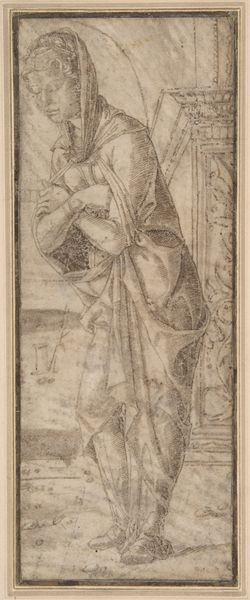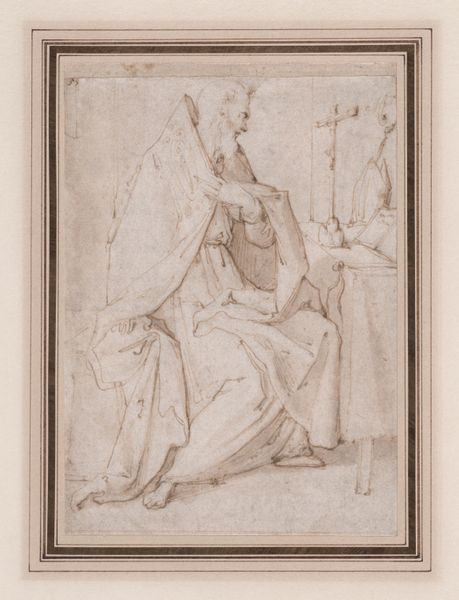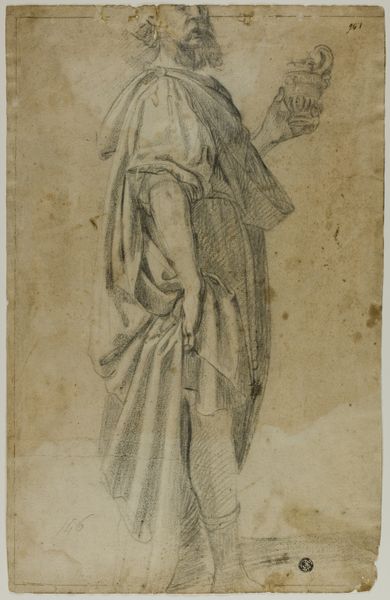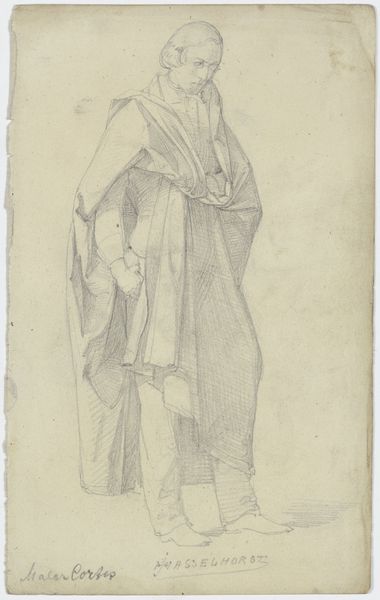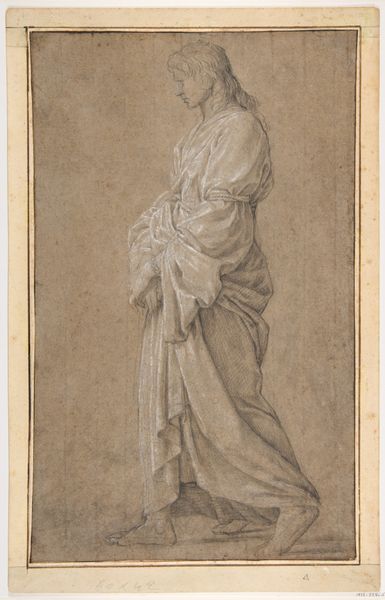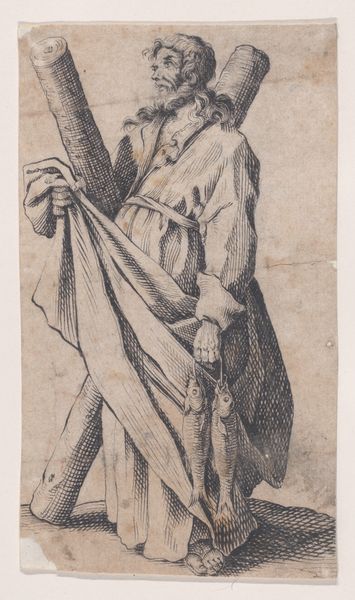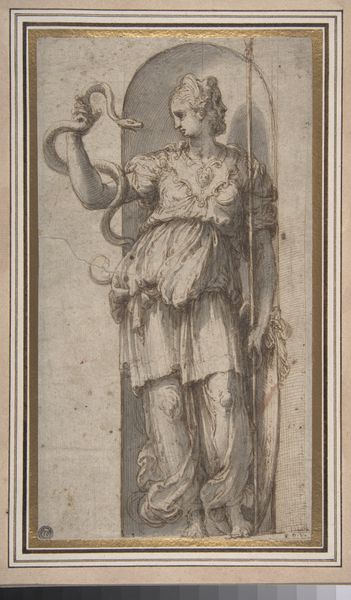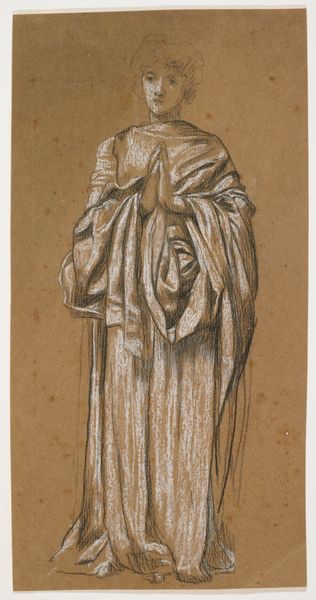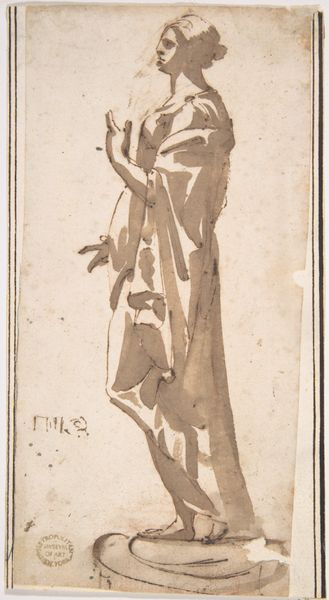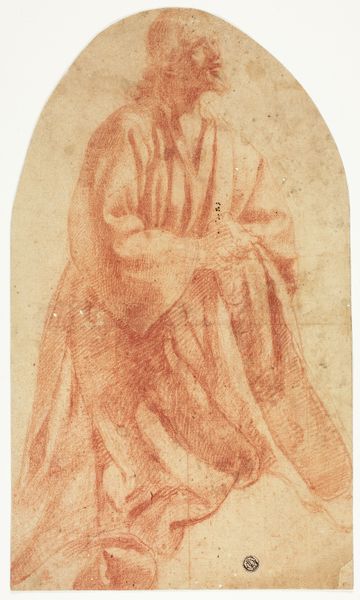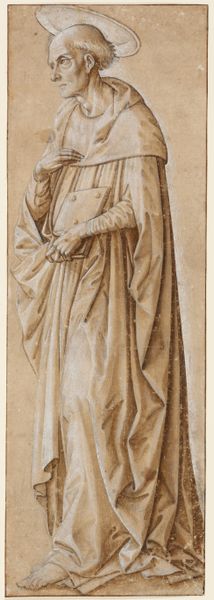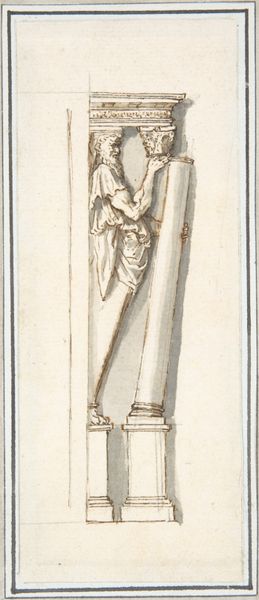
Standing Apostle 1560 - 1576
0:00
0:00
drawing, charcoal
#
portrait
#
drawing
#
charcoal drawing
#
oil painting
#
line
#
charcoal
#
history-painting
#
academic-art
#
charcoal
Dimensions: 15 x 6 1/8 in. (38.1 x 15.6 cm)
Copyright: Public Domain
Curator: Standing before us is Giovanni Bandini's, or Giovanni dell'Opera's, "Standing Apostle," created sometime between 1560 and 1576. The artwork on display in the Metropolitan Museum of Art, New York is rendered primarily in charcoal. What strikes you about it? Editor: The immediacy! It feels almost sketch-like in its raw, textural quality, yet there’s a clear command of line. You can almost feel the artist wrestling with the material. What more can you tell us about the methods used? Curator: It’s important to remember Bandini was a sculptor first, which very much comes across in his use of line and shadow to give volume and mass to the apostle, that drapes make him tangible. Also, looking through a historical and social lens, you'll appreciate this was likely a study for a larger work, potentially a sculpture, which allows us insights into Renaissance artistic processes and their dependence on iterative approaches. Editor: Yes, but consider the charcoal itself—its properties of fragility but also its potential for density of shade are explored thoroughly. This is where, I think, he’s experimenting with the nature of form itself. It's more than mere prep for something grander; it's an independent study of materials. What, in your opinion, may this figure convey in relation to other portrayals during this time? Curator: In that context, this representation of an apostle—a figure so integral to the narratives around religion, power and authority— invites introspection on what role these individuals had in contemporary European society. His gaze is distant, almost mournful, creating an accessible representation that transcends mere religious iconicity. Editor: I'm captivated by the labor made visible through the medium. The charcoal isn't just a tool; it's practically a participant in the creation. Each stroke seems to capture the hand-to-surface movement involved in image creation, that almost meditative action to form this apostle’s likeness. The physical and textural impact the lines and layers create allow an appreciation for this image. Curator: Looking back at it again, seeing your focus on materiality encourages a reevaluation. We understand it as both religious depiction and testimony to the creative act that binds the artist to the artistic object in unique relationship. Editor: A powerful synthesis to consider that, beyond its surface or even intended religious connotations, the piece captures both historical identity as well as how a form is translated to life.
Comments
No comments
Be the first to comment and join the conversation on the ultimate creative platform.
